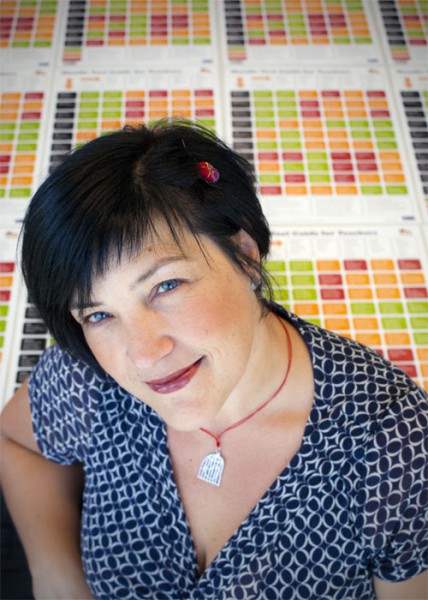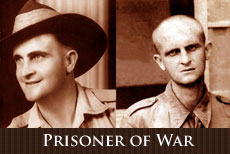Friday, and quite a good one that. The last day of term. Term two is over, the holidays beckon and they are most welcome. It has a been a significant term. This final week featured an athletics carnival, school musical, report distribution and parent/teacher interviews. Think I will unwind with a beer.
And, yes, time for Friday Follow Twitter Interview and our special guest this week is Joyce Seitzinger all the way from Napier in New Zealand. Joyce and I have exchanged tweets one and off almost from the beginning of Twitter and our shared exchanges have always been beneficial, informative and uplifting. Joyce has an amazing blog and to give you an example of the excellent narrative and informative style of Joyce’s writing and check out these two posts: 7 Habits of Highly Effective Online Discussion Participants, Twitterwalls: the writing’s on the wall and her award winning post, Moodle Tool Guide for Teachers. It is a great pleasure to have Joyce as our guest and without any further ado let’s begin…
1. Please share a little about yourself with the readers…
I’m an educational technologist working in higher education, interested in improving student learning experiences through emerging technologies and innovative teaching strategies. My special interests are Moodle, personal learning networks and networked learning, instructional design, and staff development for e-learning. I’m best known in the Moodle community for developing the Moodle Tool Guide for Teachers, which was voted second runner-up in the 2010 Edublog Awards for Most Influential Blog Post of 2010. It has been translated into 9 languages and downloaded more than 10.000 times.
I currently work as eLearning advisor at the Eastern Institute of Technology in Napier, New Zealand. I manage a team of Learning Technologists providing strategic advice, staff development & support, instructional design and course development services.
After completing a Bachelors Degree in Celtic Studies, one of my first jobs was in e-learning and I’ve had a passion for education technology ever since. I completed a Master of Education Technology from the University of Southern Queensland in 2008.
I’m Dutch but have lived in Germany, Ireland and Egypt. In 2006, I moved to New Zealand to work as e-learning advisor in tertiary education.
I also play the ukulele.
2. Describe the role played by social media in education.
Social media has become all pervasive in our lives. Our banks encourage us to follow them on Facebook, our airline companies communicate with us about ash clouds via Twitter, and our doctors talks to us via forums. Many educational institutions however have had a knee-jerk reaction: ban it, lock it down, block it. Teachers actively discouraged from using social media. It’s not an unfamiliar reaction, we saw it before with the introduction of email and the internet. However it’s an untenable position. If we allow our students to be educated inside a filtered cocoon that bears no relation to their real world, by teachers who are unfamiliar with modern tools of their industry, what are we doing?
3. How do you feel about social media?
I think it is the most exciting thing to happen to human interaction since the Gutenberg press and we are still only seeing the tip of the iceberg of how it will enable collective thinking and collaborative work.
Although I use a hefty mix of social media tools throughout every day, my drug of choice is Twitter which is where most of my Personal Learning Network resides. I often say I couldn’t do my job without Twitter and that is no exaggeration. It provides me with just-in-time information, support & professional development from people who work in my field.
I believe that becoming adept at social media and creating a personal learning network, is possibly the most sane thing a teacher can do in the 21st century, Two studies carried out in New Zealand, one in tertiary education a few years ago, and a more recent one looking at the experiences of secondary teachers, show that when it comes to professional development in education technology specific to their practice, teachers prefer it to be practical and just-in-time. A PLN will give you exactly that.
4. What do you feel are your strengths?
I think as learning technologists, it is our “clients”, not the tools, that are our biggest challenge. There is an enormous range of skill levels, contexts and understanding of education technologies in the teachers, managers and support staff we work with every day. This means that in every conversation, every interaction, every workshop, you are constantly calibrating to hit the mark, to understand their context and to contribute to your client’s practice in education technology, but not push too far. I think most days, in most meetings, I manage to hit that mark.
5. What advice do you like to share with people?
Despite my passion for social media, the advice I most give out is to do with online course design. My advice is: Design your learning activities first, then choose the resources that will support your students in participating in those activities. I often see teachers fall into “the content trap” when designing their first blended or online course. Over 5 or 10 years of teaching a course in the classroom, you amass a great wealth of various resources (articles, handouts, PowerPoint slides, links, case studies,…). When presented with a relatively easy way of organising all that information in one place it can be awfully tempting to include it all. Stop and edit yourself.
My advice: Design your learning activities first, then include only those resources in your course that will support your students in participating in those activities. Where possible, let your learners find or create a few of their own…
6. Are there any questions you would like to ask?
Why are we still lecturing?
Thank you Joyce! Excellent thoughts on course design. True, learning activities first and and the selection of resources first. Not unlike designing lessons in the classroom… determine the desired learning outcomes and then decide the strategies that will be employed to achieve those outcomes. I think in addition to the “content trap” there is also the “tool trap”. Selecting the tool to effect the tactics and strategies should be one of the final decisions in the planning process. Once again, thankj you Joyce and it has been a pleasure to have you join the Friday Follow Twitter Interview.
Readers, please remember to subscribe to Joyce’s blog, Cat’s Pyjamas, and to add Joyce to your Twitter feed.
PS. Joyce’s photograph is enriched with clues for the astute observer. My wife, Shao Ping, noticed Joyce’s pendant and, of course, there is a tiled collage of Joyce’s Moodle Tool Guide for Teachers in the background of her captivating photograph.









Recent Comments